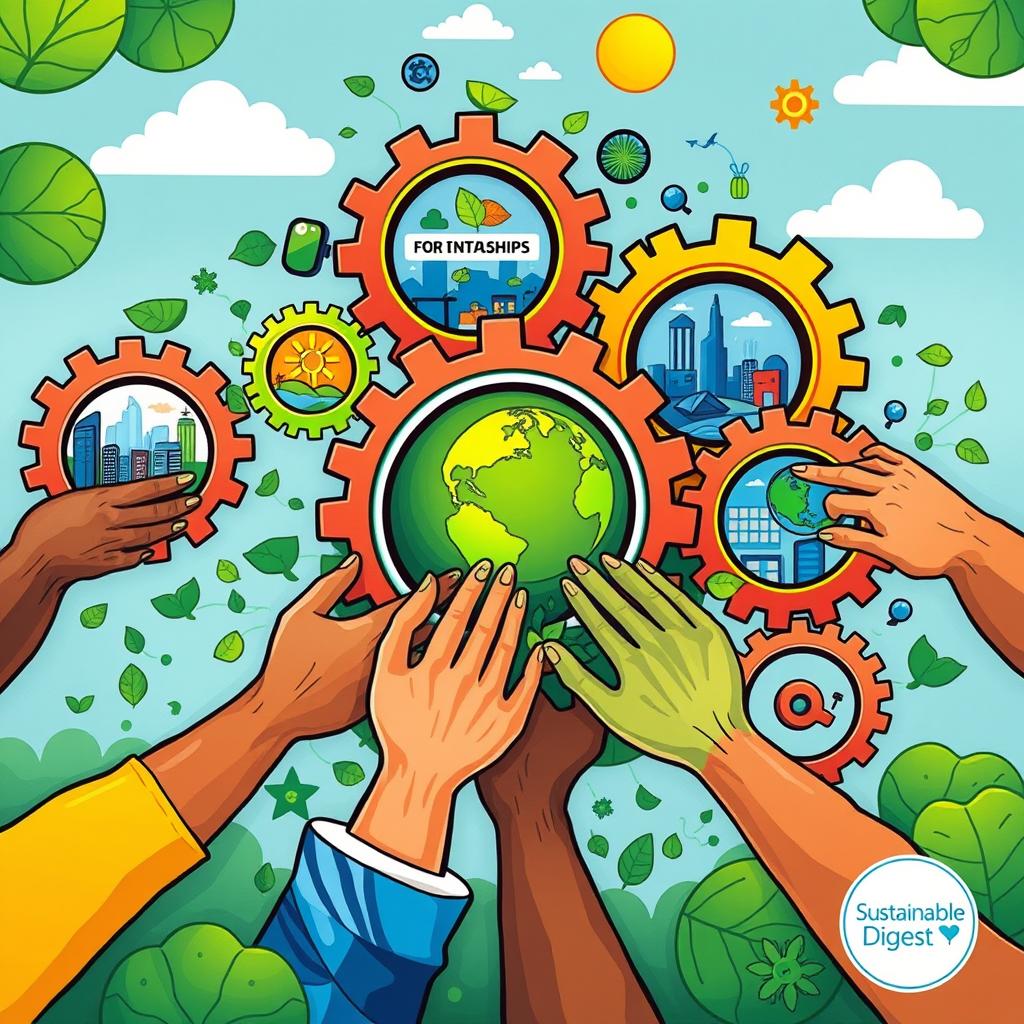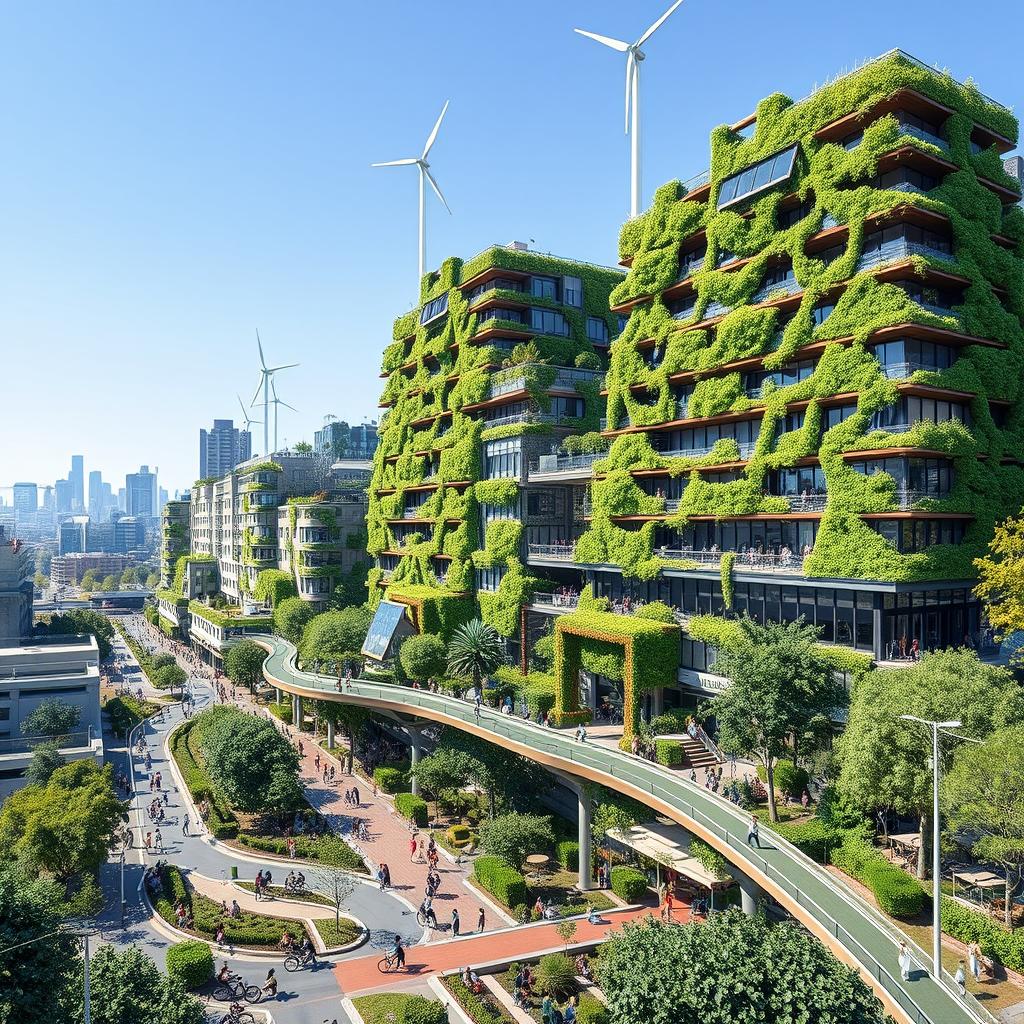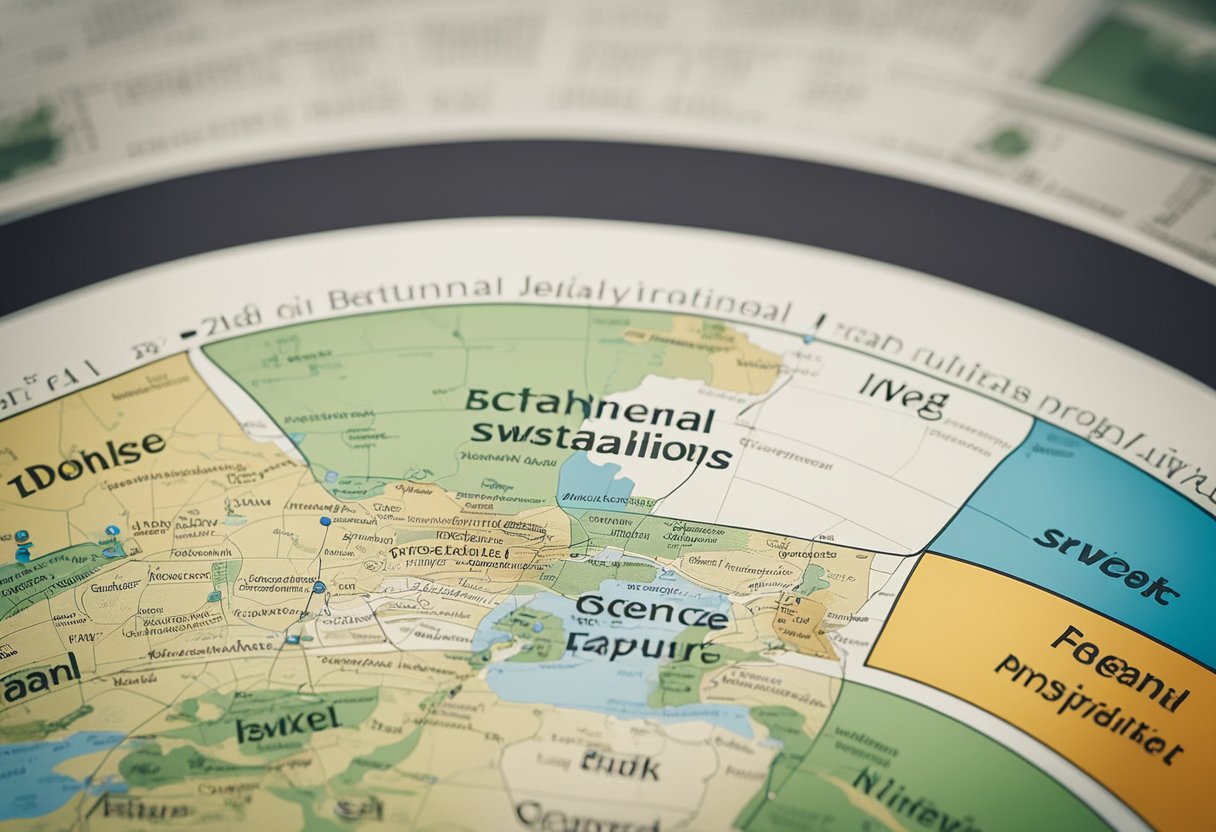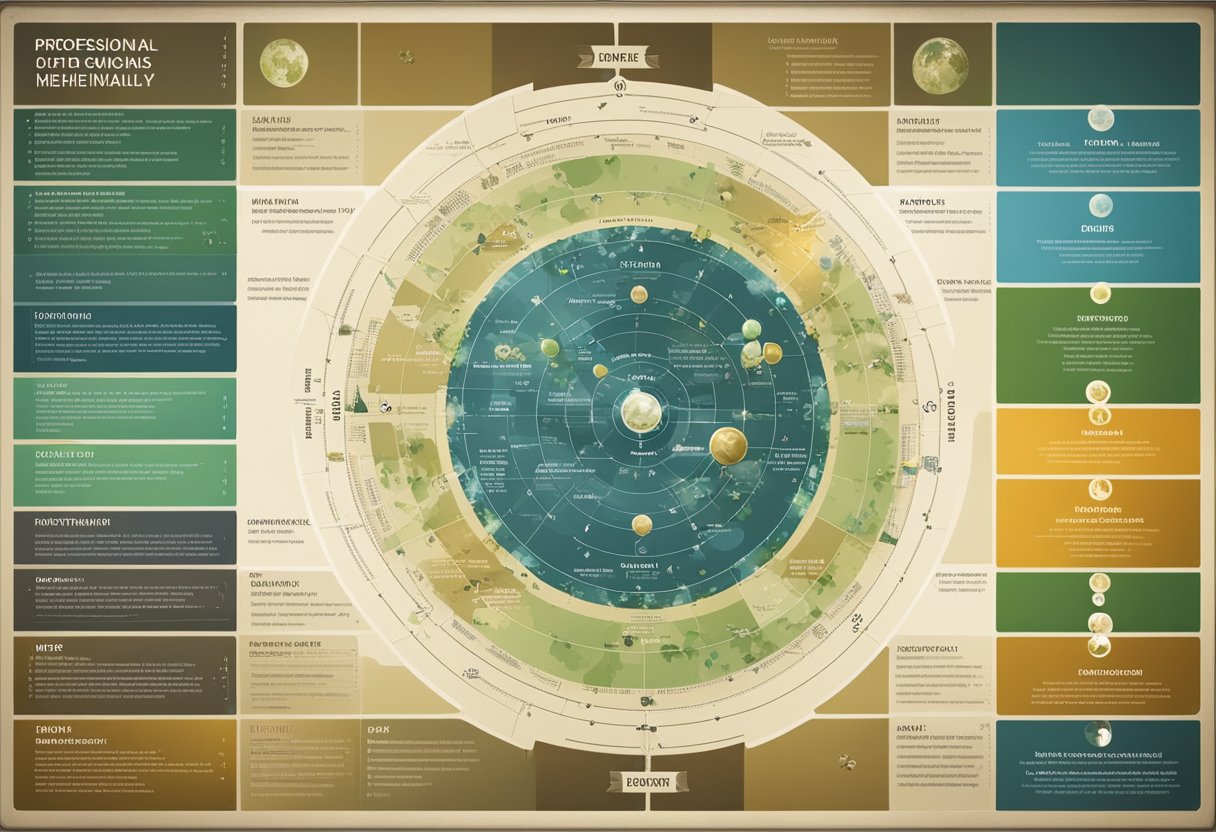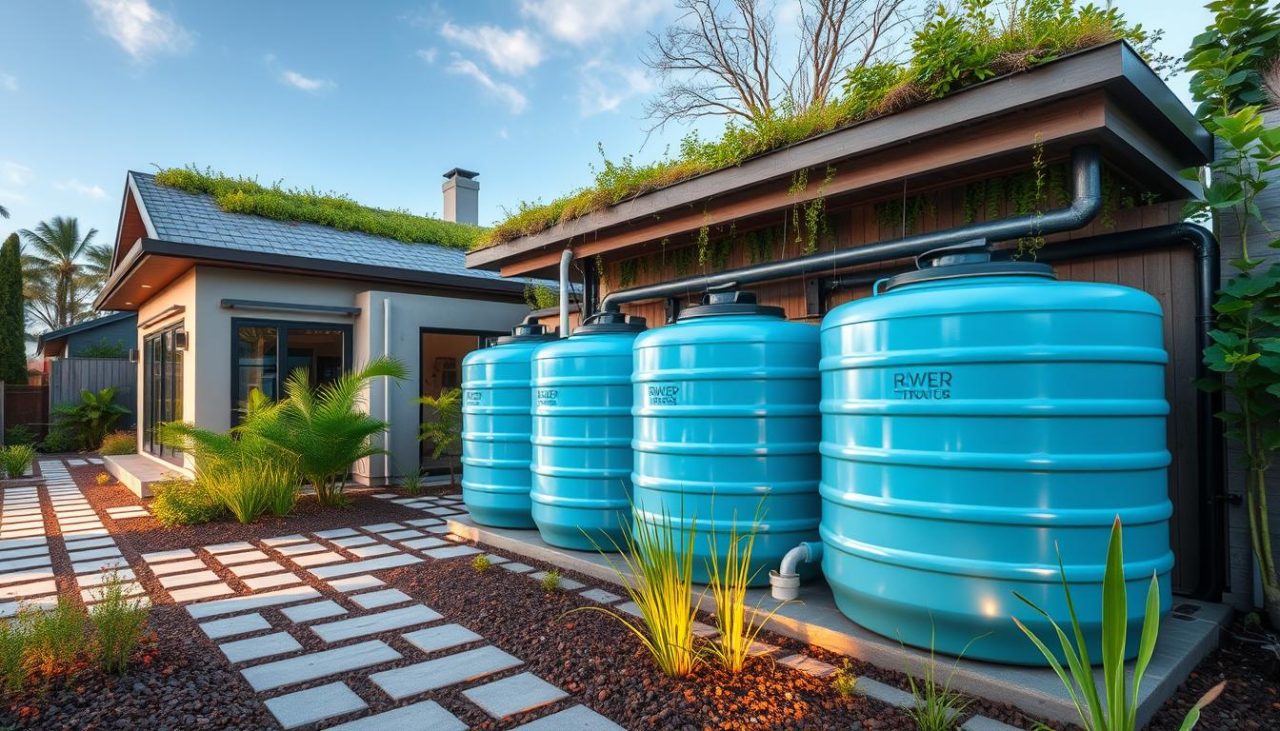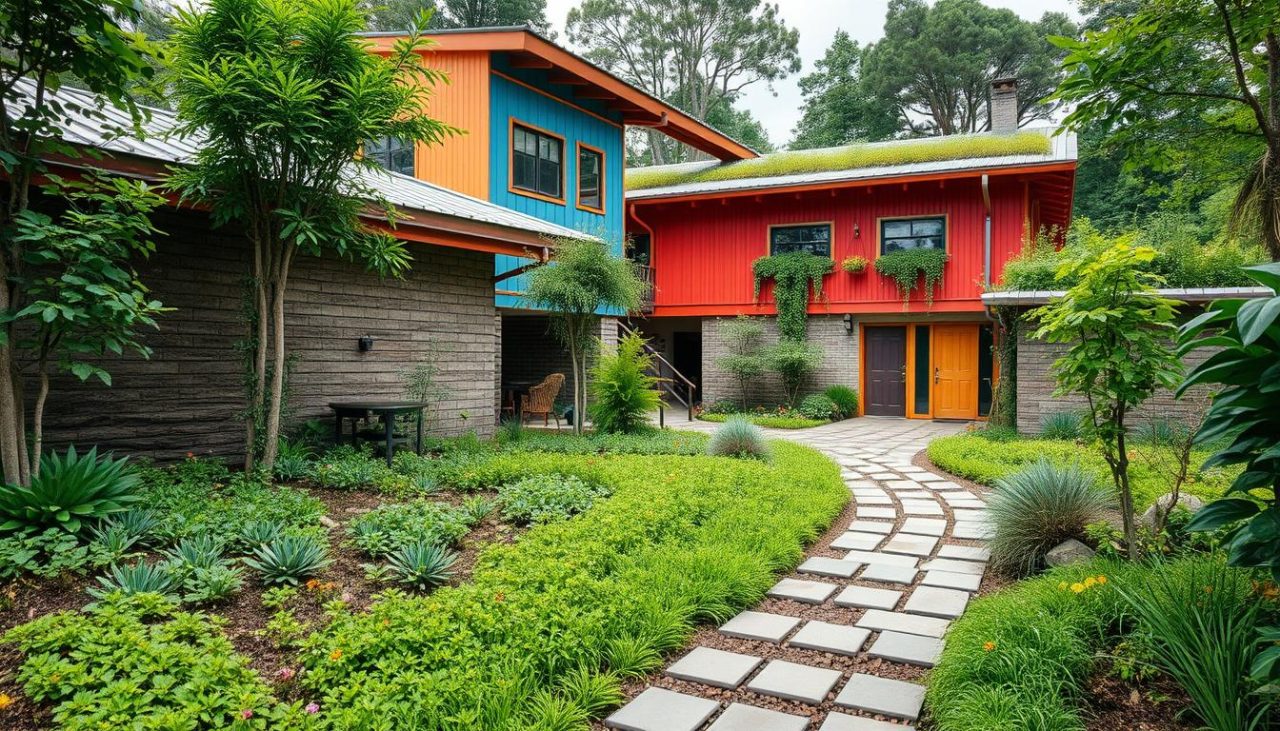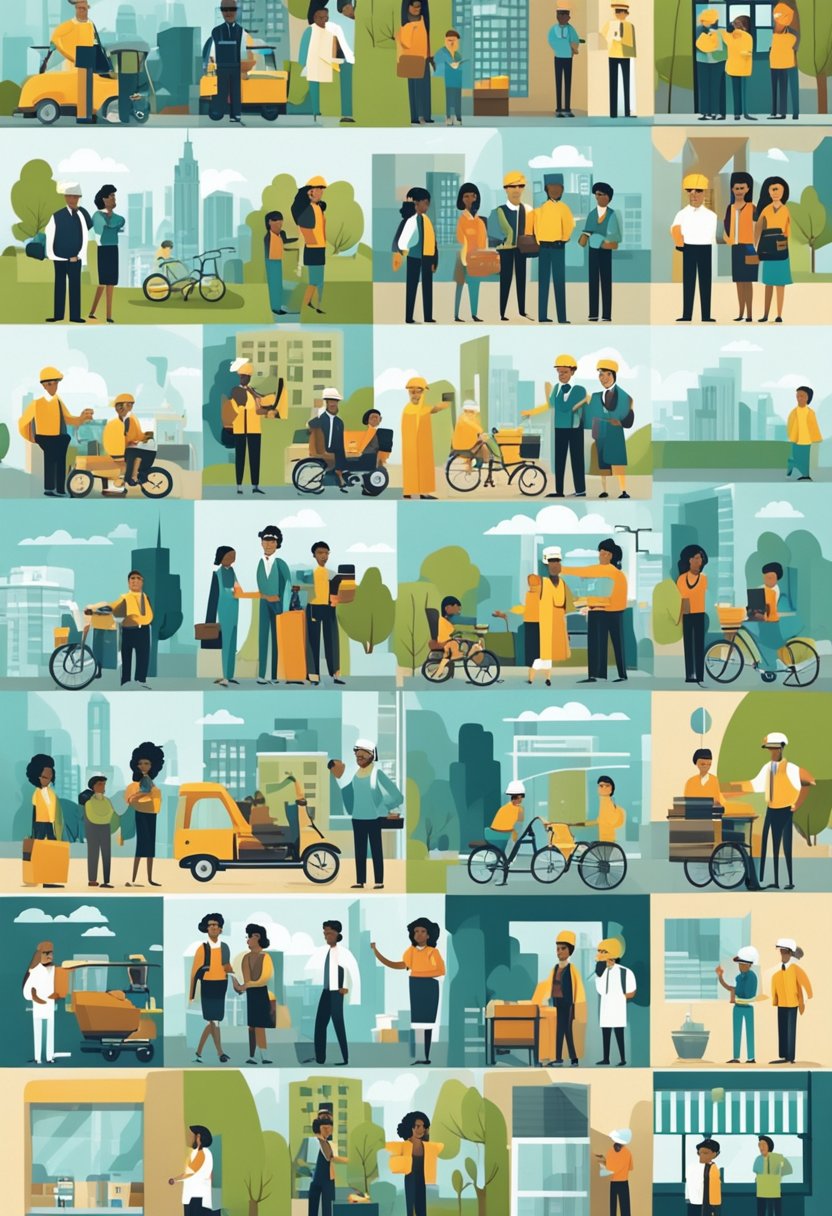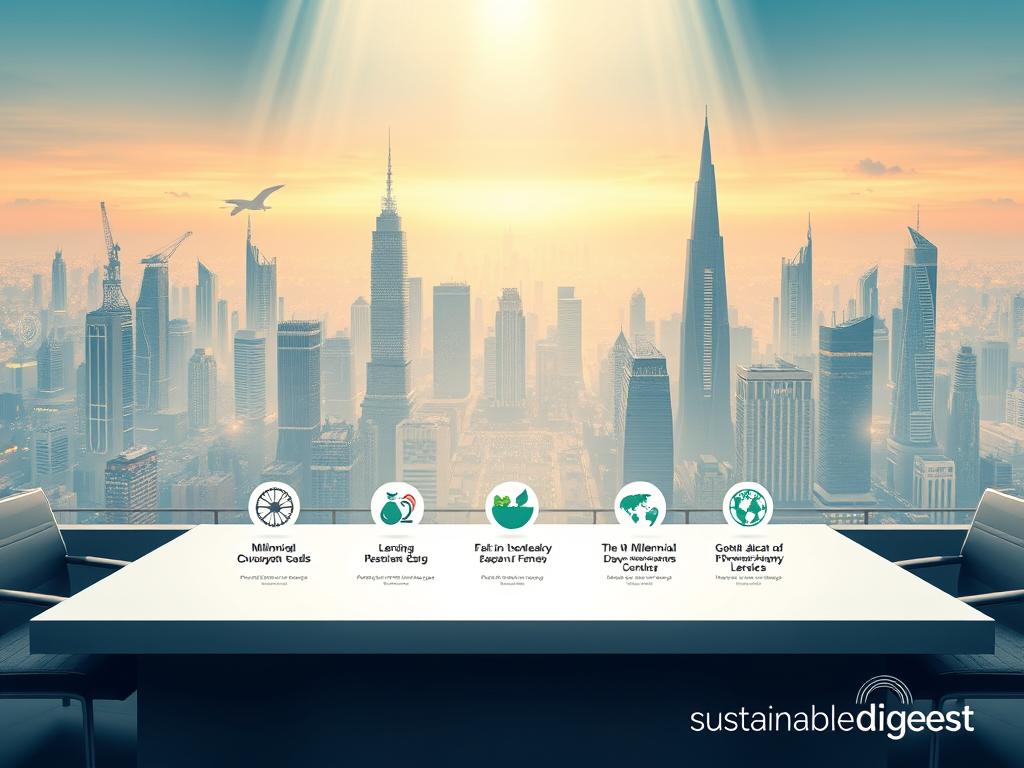
Hunger is a big problem worldwide that needs quick and united action. The United Nations’ Sustainable Development Goal #2, Zero Hunger, is key to solving this issue. NGOs, local governments, and small businesses are essential in creating change through advocacy.
Working together, international groups, local governments, and smaller scale businesses form strong teams. They focus on making food systems better. Their efforts use cultural exchange and new ideas to fight hunger everywhere.
To tackle hunger, we need an eclectic approach to take action. This includes using technology, getting communities involved, and improving policies for better outcomes. By linking global help with local plans and vice versa, we can make food security a reality.
Understanding UN SDG#2 Zero Hunger Initiative and Global Impact
The United Nations Sustainable Development Goal #2 is an important mission to end hunger and advance food systems globally. It aims to ensure food security, improve nutrition, and support overall sustainable development worldwide.
Global hunger is one of the major problems in society that needs new solutions and ongoing teamwork. The Zero Hunger initiative tackles hunger by improving agriculture practices, helping people financially, and using ethical logistics.

Current Global Hunger Statistics and Trends
Recent data shows how massive the problem of global food insecurity is. About 690 million people struggle with hunger, with the biggest issues in developing areas.
| Region | Hunger Rate | Population Affected |
|---|---|---|
| Africa | 19.1% | 250 million |
| Asia | 8.3% | 381 million |
| Latin America | 7.4% | 48 million |
Key Objectives of SDG#2 Zero Hunger
The primary goals include doubling farm output, ensuring food is produced sustainably, and maintaining crop diversity. Quality foods and fair sharing are essential to these aims.
Critical Challenges in Food Security
“Transforming our food systems is not just about producing more—it’s about producing smarter and more efficiently.” – UN Development Expert
The hurdles that stand in the way of global food security can appear very daunting, are often so for various reasons. These include climate change, poor farming infrastructure, and uneven economic growth. Using ethical logistics and sustainable methods is vital to overcome these issues.
To solve food security, we need to combine new tech, policy changes, and community efforts. This will help create strong and flexible food systems.
How NGO, municipals, and MSMEs thru advocacy for UN SDG#2 Zero Hunger programs

Global hunger needs a team effort from NGOs, local governments, and small businesses. They work together to make food systems better. This helps communities in the Global South.
NGOs are vital in making plans work together. They use local knowledge to help communities. This way, they fight hunger more effectively.
“Sustainable food security begins with understanding local challenges and empowering community-driven solutions.” – Global Food Policy Research Institute
Local governments help by making policies for food. They support small farms and help farmers with money. This helps food get to people better.
| Advocacy Strategy | Key Impact | Target Group |
|---|---|---|
| Community Garden Programs | Local Food Production | Urban Communities |
| Microfinance Agricultural Support | Economic Empowerment | Small-Scale Farmers |
| Technology Transfer Programs | Agricultural Innovation | Rural Entrepreneurs |
Small businesses play a big role in food systems. They bring new ideas to old ways of farming. This makes food systems stronger and more ready for change.
Role of NGO Consortiums in Fighting Global Hunger
Global hunger is an ongoing major challenge that needs collaborative effords to solve. NGO consortiums are key in fighting hunger by working together and finding new ways to help. They join forces to make a bigger difference and use their resources better to fight hunger everywhere.
Grassroots Support Organizations (GSOs) are important in stopping hunger before it starts. They know their communities well and can reach people that others can’t. This makes their help more effective than big, general plans.
Successful NGO Partnership Models
Some partnerships have really made a difference in food security. They use everyone’s skills, resources, and ideas to solve hunger problems in different places. This way, they can tackle big challenges together.
“Collaboration is the cornerstone of sustainable hunger solutions” – Global Food Security Alliance
Resource Mobilization Strategies
NGO consortiums are good at finding new ways to get resources. They combine money, skills, and connections to make food security programs better and last longer.
Cross-Border Collaboration Frameworks
Working together across borders is important for fighting hunger. NGO consortiums help by bringing different places and cultures together. This way, they can fight hunger on a global level.
| Collaboration Type | Key Impact | Geographic Reach |
|---|---|---|
| Regional GSO Network | Community-level interventions | Multi-country regions |
| Global NGO Partnership | Large-scale resource mobilization | International |
By working together, NGO consortiums keep finding new ways to tackle global hunger. They bring hope and lasting change to communities all over the world.
Municipal Government Initiatives for Food Security
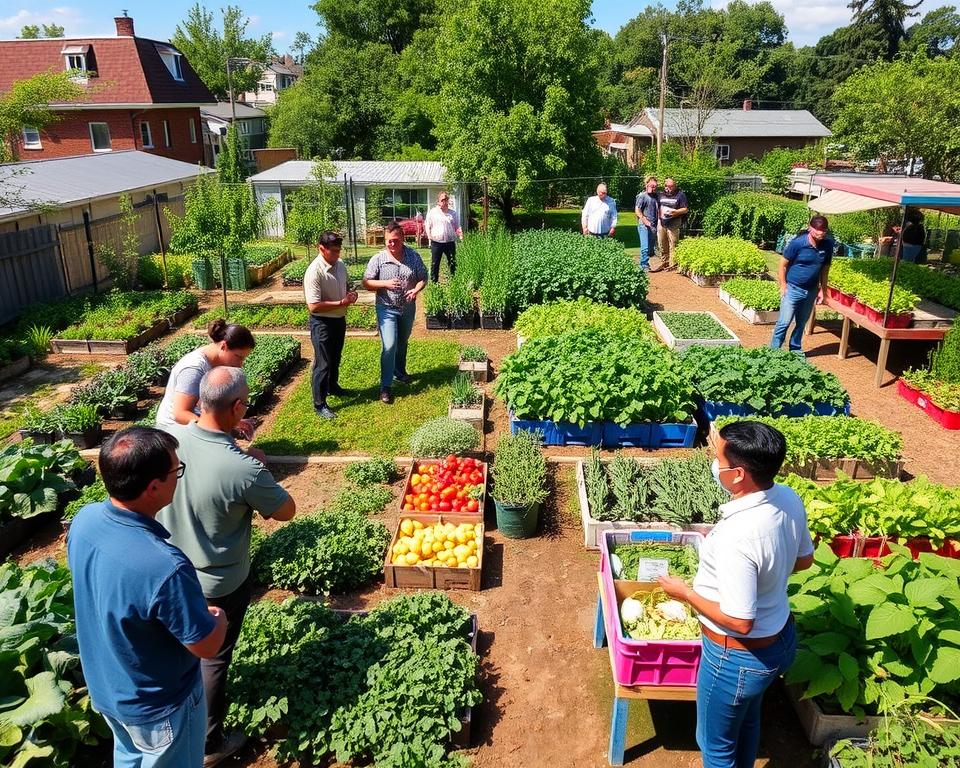
Municipals are finding new ways to tackle food insecurity. They use urban gardens and community food drives to help people get healthy food. These efforts make a big difference in local communities.
“Local governments play a critical role in creating sustainable food systems that support community resilience” – Food Security Alliance
Cities all over the U.S. are working on food security plans. They aim to support local food, grow urban gardens, and run strong community food drives. These efforts help fight hunger.
| Municipal Initiative | Key Impact | Community Benefit |
|---|---|---|
| Urban Community Gardens | Increased Local Food Production | Fresh Produce Access |
| Food Distribution Programs | Reduced Food Insecurity | Nutritional Support |
| Local Food Network Partnerships | Economic Development | Small Business Growth |
Working together, municipals, farmers, and groups are solving food security problems. Urban gardens turn empty city spots into food sources. Community food drives help those who need it most get the food they need.
These efforts show how local governments can make a real difference. They use community resources and new farming ideas to improve food security.
MSMEs’ Contribution to Sustainable Food Systems
Micro, Small, and Medium Enterprises (MSMEs) play a big role in changing local food systems. They fill important gaps in sustainable farming. They connect farmers with buyers through new ways.
Rural and urban MSMEs are changing food systems. They build local production networks. This helps small farmers and makes food more secure for communities.
Local Food Production Networks
Smaller scaled businesses use tech and partnerships to build strong local food networks. These networks cut down on transport costs. They also reduce carbon emissions and give fresher food to local markets.
Innovation in Food Distribution
MSMEs are coming up with new ways to distribute food. They use digital platforms, community-supported agriculture, and direct-to-consumer sales. This makes food systems more efficient and green.
| MSME Strategy | Impact on Food System |
|---|---|
| Digital Marketplace | Reduces intermediary costs |
| Community Supported Agriculture | Ensures farmer income stability |
| Local Food Aggregation | Increases market access |
Small-Scale Agricultural Technologies
New farming tech helps MSMEs improve their work. Precision farming tools, mobile apps, and affordable irrigation systems boost yields. They also keep the environment in balance.
“Small businesses are the backbone of sustainable food systems, driving innovation from the ground up.” – Global Agriculture Innovation Forum
Urban Agriculture and Community Gardens

Urban gardens have been and are continuing to changing city views into lively food spots. They solve local food issues in crowded cities. By using rooftops, balconies, and empty spaces, people can get more food.
“Urban agriculture isn’t just about growing food—it’s about growing communities” – City Farmer Magazine
Rooftop gardens are an emerging and important part of urban farming. They grow fresh food and help the environment. They cool cities, clean the air, and make buildings more energy-efficient. Indoor gardens also help, letting people grow food all year in small spaces.
| Urban Garden Type | Food Production Potential | Community Impact |
|---|---|---|
| Rooftop Gardens | High vegetable yield | Neighborhood engagement |
| Community Gardens | Diverse crop production | Social connection |
| Indoor Vertical Gardens | Consistent harvest | Education opportunities |
Community gardens help local communities by offering familiar food. They also bring people together. They let people grow their own food, keep traditions alive, and build community through gardening.
Urban farming shows cities can be food hubs. By using rooftops, indoor gardens, and community areas, cities can grow food sustainably. This feeds both people and communities.
Farmer and Rancher Cooperatives: Building Sustainable Food Networks
Farmer cooperatives has always been around relatively and thus are a vital component in making food systems sustainable. They help farmers work together and grow their income. These groups let small farmers share resources, knowledge, and find markets they couldn’t alone.

Rancher cooperatives are changing how we farm. They give farmers a strong voice to get better prices and cut costs. They also try new farming ways.
Cooperative Management Structures
Good farmer cooperatives aggregate decisions together. Members choose leaders who speak for all farmers. This way, everyone has their voice heard and actions are executed fairly.
Market Access Strategies
“Collaboration is the cornerstone of agricultural resilience” – Agricultural Economist, Dr. Sarah Martinez
Farmer cooperatives find new ways to sell their products. They use online platforms, sell directly to consumers, and partner with distributors. This builds strong food chains for local and global needs.
Technology Integration in Farming
Modern rancher cooperatives use the latest tech to farm better, ironically more so than actual farmer cooperatives. They use precision farming, satellite images, and data to farm smarter. This makes farming more efficient and productive.
Farmer and rancher cooperatives are changing the food world. They build strong, sustainable farming networks. These networks help local communities and feed the world.
Sustainable Supply Chain Management in Food Security
Sustainable supply chain management is solving global food security issues which is key. It involves a network of ethical logistics that helps deliver quality foods to people everywhere. Companies are working hard to build food systems that are good for the planet and make sure everyone gets the nutrients they need.
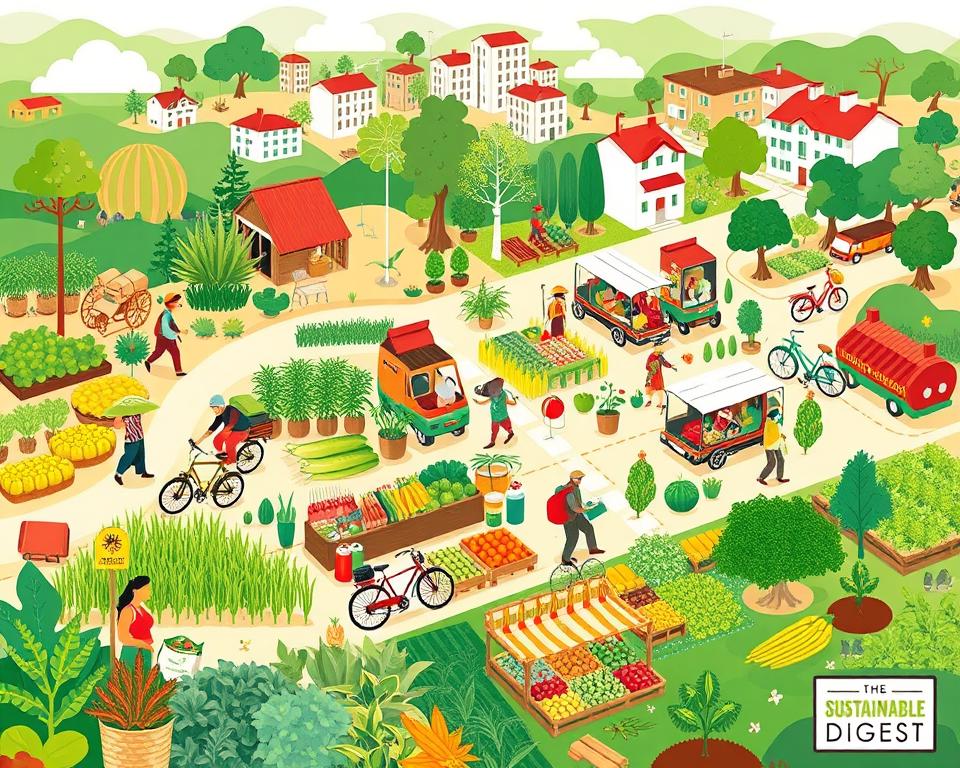
Air travel and aviation in general are playing a big role in getting food to where it’s needed fast. It helps bring local foods to distant places. Now, we can track food quality in real-time, keeping it fresh and nutritious.
“Sustainable supply chains are not just about transportation, but about creating holistic food ecosystems that support both producers and consumers.” – Global Food Security Expert
New technology is changing how we move food. It lets us check food temperature in real-time, cut down on waste, and find the best routes for food delivery.
| Supply Chain Component | Sustainability Impact | Technology Used |
|---|---|---|
| Local Food Production | Reduced Carbon Footprint | IoT Tracking Systems |
| Transportation | Efficient Route Planning | AI Logistics Optimization |
| Storage | Minimal Food Waste | Advanced Refrigeration |
Small and medium businesses are also joining the sustainable supply chain movement. They focus on ethical logistics and local food systems. This helps make food distribution more reliable and responsive.
International Partnership and Regional Collaboration Models
Global food security challenges need new ways to solve them. Intra-national partnerships are key to fighting hunger and malnutrition worldwide.

Good regional collaboration needs sound plans. These plans connect different communities and farming systems. Countries see the value of working together through cross-cultural food security programs.
Bridging Cultural Divides in Food Security
Great international and secure intra-continental partnerships use cultural knowledge to make a difference. They understand local farming and community needs. This helps them create better food security plans.
“Cultural understanding is the foundation of meaningful global cooperation in addressing hunger.” – World Food Program Expert
Knowledge Sharing Platforms
Now, digital platforms help share knowledge fast. They connect researchers, policymakers, and farming experts. This sharing spreads best practices, new tech, and research findings everywhere.
| Partnership Type | Key Characteristics | Impact Potential |
|---|---|---|
| Bilateral Cooperation | Direct country-to-country engagement | Targeted resource sharing |
| Multi-Regional Networks | Broader collaborative frameworks | Comprehensive problem-solving |
| Academic-Government Partnerships | Research-driven interventions | Innovative solution development |
By working together, countries can build stronger food security plans. These plans tackle the tough global challenges we face.
Local Food Initiatives and Community Engagement

Local food initiatives have changed how we connect and access food. Urban gardens such as roof and vertical gar and farmer markets are key in building strong food systems. They help neighborhoods and support local businesses.
“Community food drives are not just about feeding people, but building resilient local food networks.”
Community food drives are now a big help in fighting hunger and supporting local farming. They link farmers, residents, and food networks. This ensures fresh, healthy food gets to those who need it most.
| Initiative Type | Community Impact | Food Security Contribution |
|---|---|---|
| Urban Gardens | Neighborhood Empowerment | Direct Fresh Produce Access |
| Farmer Markets | Local Economic Support | Small Farm Sustainability |
| Community Food Drives | Social Connectivity | Hunger Reduction |
Urban gardens have changed city views, turning empty spots into farms. These green areas give us fresh food and teach us about growing food the right way.
Cultural exchange through food initiatives represents a unique approach to building community resilience and understanding.
Supporting local foods and farming helps cities grow better food systems. This benefits farmers and city folks who want healthy, affordable food.
Implementing Food Security Programs: Best Practices
To achieve sustainable food security, we need strong strategies. These strategies must go beyond old ways. Organizations tackling global hunger must create detailed plans that show real results.

International factors greatly affect agriculture programs. Global trade rules such as tariffs, private/public policies, export, and import can be monumental for pivoting on Nations strategy. Additionally, both economic shifts and diplomatic ties all play a part. It’s crucial to plan carefully, considering these complex links.
Monitoring and Evaluation Methods
Good food security programs need solid monitoring. Key signs of success help us see how we’re doing. We should focus on:
- Regular data collection
- Quantitative and qualitative assessment
- Community feedback mechanisms
Impact Assessment Frameworks
Understanding the success of food distribution needs detailed frameworks. These frameworks show the actual effects of our work.
| Assessment Dimension | Key Metrics | Evaluation Frequency |
|---|---|---|
| Nutritional Outcomes | Dietary diversity, child malnutrition rates | Quarterly |
| Economic Impact | Household income, agricultural productivity | Bi-annually |
| Community Resilience | Food security index, local adaptation strategies | Annually |
“Successful food security programs are not just about providing food, but creating sustainable systems that empower communities.” – World Food Programme Expert
Utilizing these best practices means constant collaboration, being flexible or adaptable, and knowing both the local and, in some scalable instances, the international scene well. Organizations must be ready to adjust to new global issues.
Key Takeaways
- Zero Hunger requires comprehensive global collaboration
- MSMEs play crucial roles in sustainable food networks
- Advocacy drives systemic change in food distribution
- Cultural diplomacy enhances international hunger initiatives
- Innovative partnerships create sustainable solutions

Conclusion
The UN SDG#2 Zero Hunger programs are the main way to solving global food problems. NGOs, local governments, and smaller scale businesses are working together. They show how teamwork can make a big difference in fighting hunger.
Working together across borders is crucial. It helps bridge economic and cultural divides. By joining forces, we can build robust systems for growing, sharing, and getting food.
Technology, community involvement, and sharing knowledge are vital. Every effort, from urban gardens to better supply chains, helps. Together, we can make a real difference in ending hunger and ensuring food for all.
Our fight against hunger needs ongoing learning and action. By focusing on sustainable growth and staying committed, we can achieve the UN SDG#2 goal. This will bring real change to millions of people worldwide.















